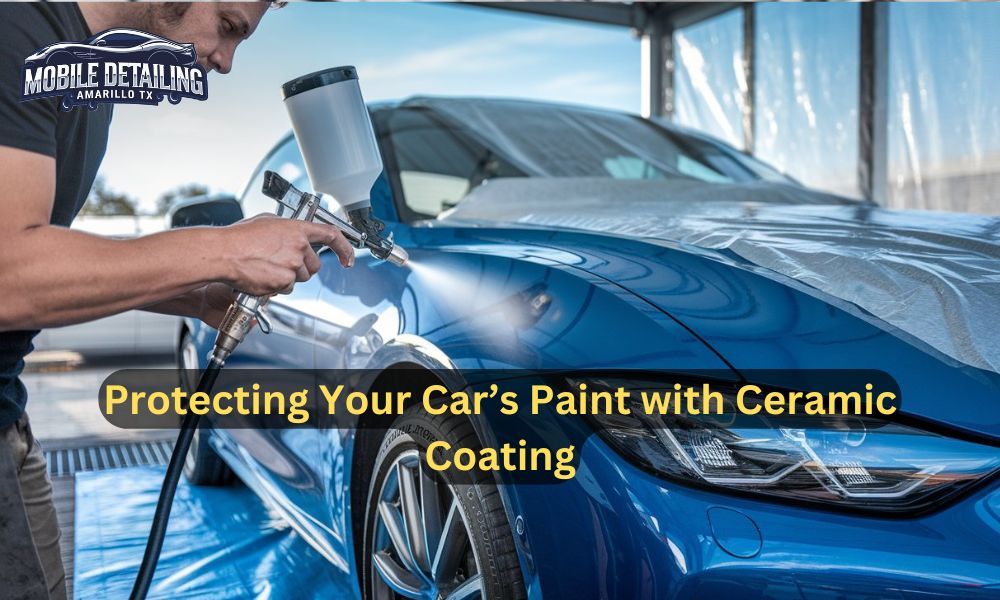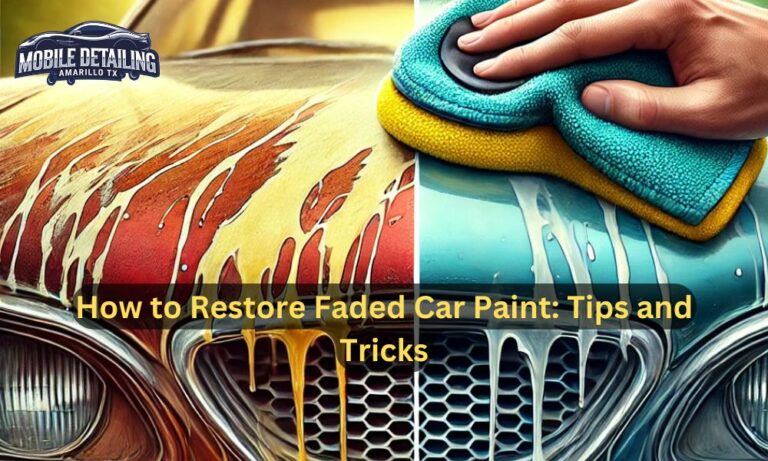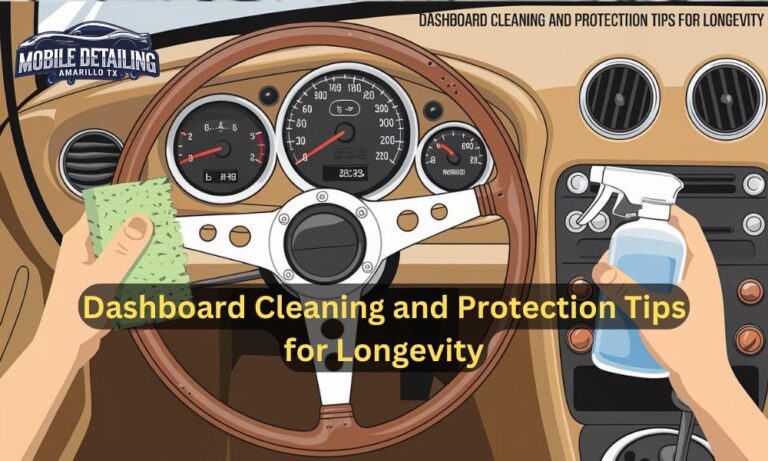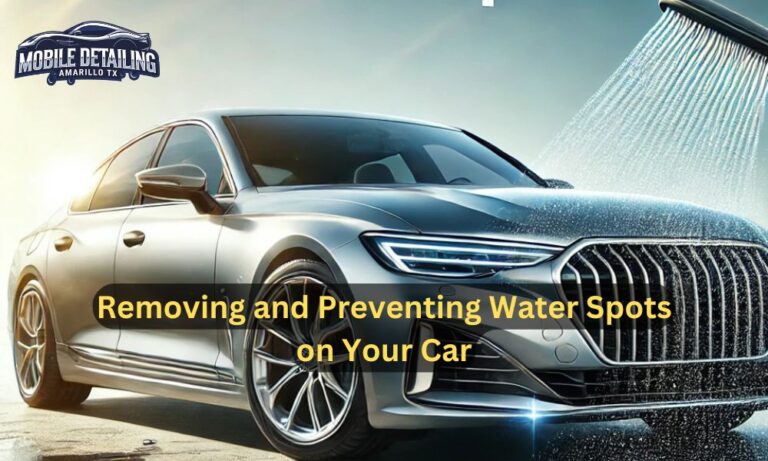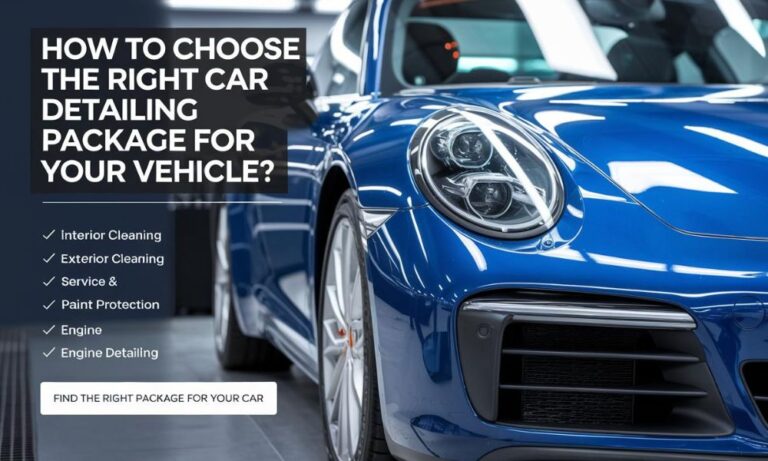Maintaining the pristine condition of your vehicle’s paint is a top priority for many car owners, especially in places like Amarillo, TX, where weather conditions can be harsh. One of the best ways to protect your car’s exterior from environmental damage is by applying a ceramic coating. This article will explore how ceramic coating works, its benefits, the application process, and why it’s a smart investment for your vehicle.
What is Ceramic Coating?
Ceramic coating is a liquid polymer applied to a vehicle’s exterior to provide long-lasting protection. Once applied, the coating chemically bonds with the factory paint, creating a durable layer that shields the car from various environmental hazards such as UV rays, road salts, bird droppings, tree sap, and even light scratches. Unlike wax, which wears off over time, ceramic coatings offer more durable protection, often lasting several years with proper care.
How Does Ceramic Coating Work?
The primary ingredient in ceramic coating is silicon dioxide (SiO2), which is commonly found in natural materials like quartz and sand. When applied, the coating forms a semi-permanent bond with the car’s paint. This creates a hydrophobic (water-repellent) surface, making it harder for dirt, water, and other contaminants to stick to the paint.
This layer doesn’t just protect against contaminants; it also provides a deep, glossy finish that enhances the car’s appearance. With the dry, dusty conditions typical of Amarillo, TX, ceramic coating offers a highly effective way to keep a vehicle looking new without requiring frequent washing.
Benefits of Ceramic Coating
1. Long-Lasting Protection
One of the main advantages of ceramic coating is its longevity. Once applied, the coating can last between 2 to 5 years, depending on the type and quality of the coating as well as the car’s maintenance routine. Traditional waxing needs to be repeated every few months, whereas ceramic coatings require much less frequent reapplication.
2. Protection from UV Damage
The intense sunlight in Amarillo, TX can cause the paint on your vehicle to fade or oxidize over time. Ceramic coatings offer a layer of protection against UV rays, preventing damage that would otherwise dull your car’s finish. This is particularly important in sunny climates where UV exposure is constant.
3. Hydrophobic Properties
The hydrophobic nature of ceramic coatings means that water and contaminants roll off the surface instead of sticking. This not only makes cleaning easier but also reduces the chance of water spots or streaks forming on the vehicle’s exterior. In a region like Amarillo, where dust and debris are common, this feature can be incredibly useful in maintaining a clean car exterior with less frequent washing.
4. Resistance to Environmental Contaminants
Ceramic coatings are highly resistant to contaminants like bird droppings, tree sap, and road salt, which can cause significant damage to a car’s paint if not treated promptly. In Amarillo, where extreme weather conditions and road salts are frequent, having an additional layer of protection can save you from costly paint repairs in the future.
5. Enhances Paint Appearance
Beyond just protection, ceramic coating enhances the overall look of the vehicle. The coating provides a glossy, mirror-like finish that enhances the depth and clarity of the car’s paint. Whether your car is brand new or has been on the road for years, ceramic coating can give it a showroom-quality finish.
The Process of Applying Ceramic Coating
While many car owners might attempt a DIY application, professional installation of ceramic coating is highly recommended to ensure the best results. Here’s a breakdown of the steps involved in applying ceramic coating:
1. Prepping the Surface
Before applying the ceramic coating, the vehicle’s surface must be thoroughly cleaned to remove any dirt, oils, or residues that could interfere with the coating’s bond to the paint. This usually includes a full wash and a clay bar treatment to lift contaminants embedded in the paint.
2. Paint Correction (If Needed)
If the vehicle has any scratches, swirl marks, or other imperfections, a paint correction process is typically performed before applying the ceramic coating. This ensures that the finish is as smooth and flawless as possible before sealing it with the ceramic layer.
3. Applying the Ceramic Coating
Once the surface is clean and corrected, the ceramic coating is applied in small sections. The product is allowed to bond with the paint for a specific period, after which any excess is wiped off. The process requires precision, as uneven application can result in streaks or high spots in the finish.
4. Curing Time
After application, the coating needs time to cure. Depending on the product used, this can take anywhere from a few hours to several days. During this period, it’s important to keep the vehicle dry and avoid driving in harsh conditions.
Why Amarillo Car Owners Should Invest in Ceramic Coating?
1. Weather Conditions
The dry, hot climate in Amarillo, combined with frequent dust storms, can wreak havoc on a car’s paint. Ceramic coating provides an effective shield against these elements, reducing the frequency of washes and keeping the car’s paint in better condition for longer periods.
2. Cost-Effectiveness
While the initial cost of ceramic coating can be higher than traditional waxing or sealants, the long-term savings are significant. Because ceramic coating lasts several years and provides superior protection, car owners can save on frequent waxing, cleaning, and potential paint repairs due to environmental damage.
3. Improved Resale Value
Maintaining a car’s paint is crucial when it comes to resale value. A vehicle with a well-maintained exterior is much more appealing to potential buyers. By investing in ceramic coating, you ensure your car stays in top condition, which can boost its resale value when you decide to sell or trade it in.
Ceramic Coating vs. Other Paint Protection Methods
1. Waxing
Waxing is a traditional method for protecting a vehicle’s paint, but it lacks the durability of ceramic coating. While wax provides a shiny finish, it only lasts a few months at most and doesn’t offer the same level of protection against UV rays, contaminants, or minor scratches. Frequent reapplication is needed, which adds to maintenance costs over time.
2. Paint Sealants
Paint sealants last longer than wax, typically up to six months, but they still fall short of the durability and protective qualities of ceramic coatings. Sealants don’t offer the same hydrophobic properties and are more prone to wear over time, especially in harsh climates like Amarillo.
3. Clear Bra (Paint Protection Film)
Clear bras, or paint protection films, are another option for protecting a car’s paint, particularly in areas prone to rock chips or road debris. While they offer good protection for high-impact areas, they lack the glossy finish and widespread coverage of ceramic coatings. Additionally, clear bras can turn yellow over time, detracting from the car’s appearance.
Conclusion
For Amarillo car owners, protecting your vehicle’s paint is essential, given the region’s unique climate and environmental challenges. Ceramic coating provides long-lasting protection, enhances the appearance of the car, and offers cost-effective benefits over time. While the initial investment may seem high, the long-term advantages make ceramic coating one of the best solutions for preserving your vehicle’s paint.

